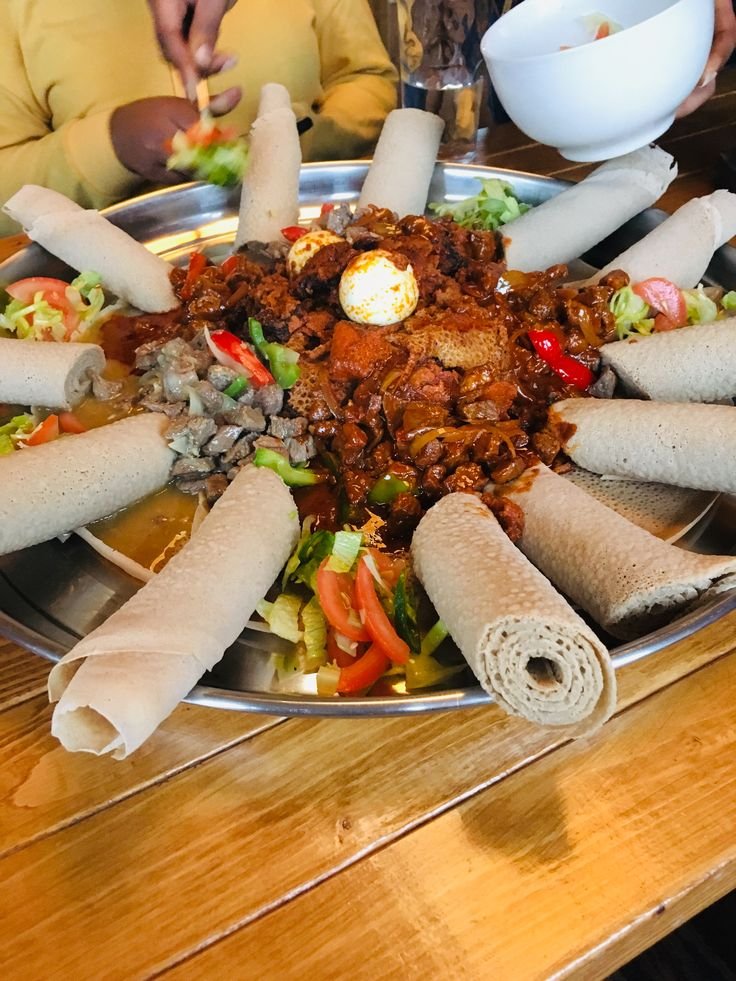Cevurı is a term that holds deep roots in traditional culinary practices, particularly within Middle Eastern and Turkish cuisines. Although not as widely recognized globally as some other food terms, cevurı plays a significant role in the kitchens where it is known. With its history, versatility, and distinctive preparation methods, cevurı continues to be a cornerstone of many regional dishes that have been passed down through generations. This article delves into the origins of cevurı, its uses in cooking, and its cultural importance, offering insight into why it remains a cherished part of many culinary traditions.
Understanding Cevurı: Its Origins and Meaning
The term cevurı is primarily associated with Turkish and Middle Eastern culinary traditions, and its definition can vary depending on the region. The most common interpretation of cevurı refers to a cooking method that is used for slow-cooking meats, vegetables, and grains, often combined with rich spices and herbs. This technique is used to bring out the full flavors of the ingredients, creating a tender, hearty dish.
The origins of cevurı can be traced back to the ancient agricultural practices of the Middle East, where slow-cooking was essential for tenderizing meat and making the most of available resources. The word cevurı is believed to have evolved from the practice of cooking meat over a slow fire or in a traditional oven for extended periods. This allowed for the infusion of spices and the breaking down of tough cuts of meat, making them more palatable and flavorful.
In Turkey, cevurı is a term that is closely linked with the preparation of stews or braised dishes. As with many other regional dishes, the ingredients and spices used in cevurı can vary based on the availability of local produce, meats, and grains. However, the method of slow-cooking remains a constant, ensuring that the final dish is flavorful and satisfying.
The Traditional Preparation of Cevurı
At its core, cevurı is about slow cooking. Whether cooked in a traditional clay pot, an oven, or over an open flame, the goal is to ensure that the meat becomes incredibly tender, and the flavors have ample time to meld together.
The preparation of cevurı typically begins with selecting the right cut of meat. Traditionally, lamb, beef, or goat are common choices, though other meats can also be used. The meat is often browned to develop a rich flavor before being simmered for hours with vegetables, herbs, and spices. These can include tomatoes, onions, garlic, and carrots, along with a variety of spices like cumin, cinnamon, allspice, and saffron, which are characteristic of many Middle Eastern and Turkish dishes.
The cooking method allows the flavors to develop gradually. The slow-cooking process tenderizes the meat and ensures that the spices are absorbed into every piece of food. The inclusion of vegetables such as eggplant, zucchini, or potatoes helps to create a balanced, hearty dish. In some variations, grains like rice or bulgur may also be added, turning the dish into a complete meal.
The key to perfect cevurı is the patience required to let the dish cook over several hours. Unlike quick cooking methods, cevurı demands that the cook leave the dish to simmer slowly, allowing all the ingredients to soften and take on the rich flavors of the spices and aromatics. This slow process is essential to achieving the tender, melt-in-your-mouth texture that is characteristic of this cooking technique.
Variations of Cevurı Across Cultures
While cevurı has its roots in Turkish and Middle Eastern cuisines, it has evolved into a variety of different dishes depending on the region. Different cultures have adopted and adapted the slow-cooking technique, creating their own unique interpretations of cevurı.
In Turkey, cevurı is often associated with traditional family meals, particularly during holidays and large gatherings. A typical cevurı dish might involve slow-cooking lamb or beef with vegetables and spices, resulting in a rich and hearty stew. The dish is typically served with rice or flatbreads, such as pita or lavash, which complement the richness of the meat and vegetables.
In countries like Lebanon and Syria, cevurı is also popular, but the flavors and ingredients used can vary greatly. Lebanese cevurı might include a combination of lamb or chicken, cooked with dried fruits such as apricots or prunes, offering a sweet and savory flavor combination. The dish is also flavored with fresh herbs such as mint, parsley, and cilantro, which give it a refreshing, fragrant quality.
In Iran, cevurı is often called “khoresh,” a term used for various slow-cooked stews. The ingredients in Iranian cevurı can range from lamb to chicken, and the dishes often feature a complex layering of spices, including turmeric, saffron, and dried limes. The result is a flavorful, aromatic stew that is enjoyed with rice and accompanied by yogurt or pickles.
While the basic principle of slow cooking remains the same, the use of different regional ingredients and spices gives each version of cevurı its own unique flavor profile. Whether it’s the use of dried fruit in Lebanon or the addition of saffron in Iran, cevurı continues to evolve based on local tastes and customs.
Cevurı in Modern Kitchens

While cevurı originated as a traditional cooking technique, it has found its place in modern kitchens as well. Today, cooks and chefs around the world use slow-cooking methods to create dishes that mimic the essence of traditional cevurı. One of the most notable modern adaptations is the use of slow cookers or pressure cookers, which help to replicate the long cooking times needed for a perfect cevurı.
Slow cookers allow for the tenderizing of meats without constant attention, making it easy to prepare dishes that resemble traditional cevurı with minimal effort. Additionally, the use of pressure cookers can speed up the process while still allowing the dish to retain its deep flavors and tender texture. These modern tools have made cevurı more accessible to people who may not have the time or resources to cook using traditional methods.
Another innovation is the use of alternative ingredients to accommodate dietary restrictions. For example, plant-based meats, such as jackfruit or seitan, are sometimes used in place of traditional meats in cevurı dishes, allowing for a vegetarian or vegan version of the dish. Similarly, gluten-free grains like quinoa or rice can be substituted for traditional bulgur or wheat.
Despite these modern adaptations, the core of cevurı remains rooted in the same principles of slow-cooking and rich flavor development. The dish continues to serve as a reminder of the cultural importance of food that is made with patience, care, and attention to detail.
Cevurı’s Cultural Significance
Food, particularly dishes like cevurı, holds great cultural significance in many parts of the world. The act of preparing and sharing cevurı is a communal activity that brings people together. In Turkey, Lebanon, and other Middle Eastern countries, cevurı is often served during special occasions such as religious holidays, weddings, and family gatherings. The slow-cooked nature of the dish means that it is often prepared in large quantities, encouraging communal sharing and fostering a sense of togetherness.
Additionally, cevurı represents a connection to the past. It is a dish that has been passed down through generations, and the recipes often reflect the agricultural practices, regional ingredients, and historical influences of the areas where it is made. The preservation of traditional cooking methods like cevurı serves as a way to maintain a connection to cultural heritage and identity.
For many people, cevurı is not just a meal; it is a celebration of family, tradition, and culture. The dish holds sentimental value, as it is often associated with memories of family meals, holidays, and gatherings. In this way, cevurı transcends its role as a simple dish and becomes a symbol of the importance of food in connecting people to their roots and to each other.
Also Read Here: Can Outsiders Run on Old Post Road? Exploring Access and Regulations
Conclusion
The world of cevurı is rich, diverse, and deeply rooted in cultural history. From its origins as a method of slow-cooking meats to its modern-day adaptations, cevurı continues to captivate people with its tender, flavorful dishes. The beauty of cevurı lies in its ability to bring together a variety of ingredients and spices in a way that celebrates the essence of slow cooking. Whether enjoyed in the traditional homes of Turkey, Lebanon, or Iran, or in modern kitchens across the world, cevurı remains a symbol of community, tradition, and the timeless joy of sharing a meal with others.

